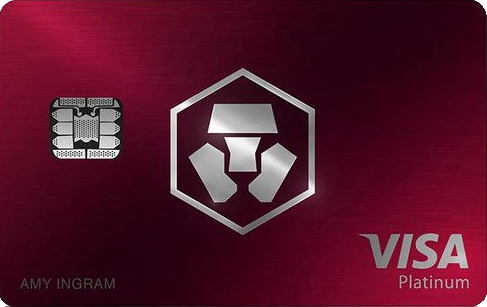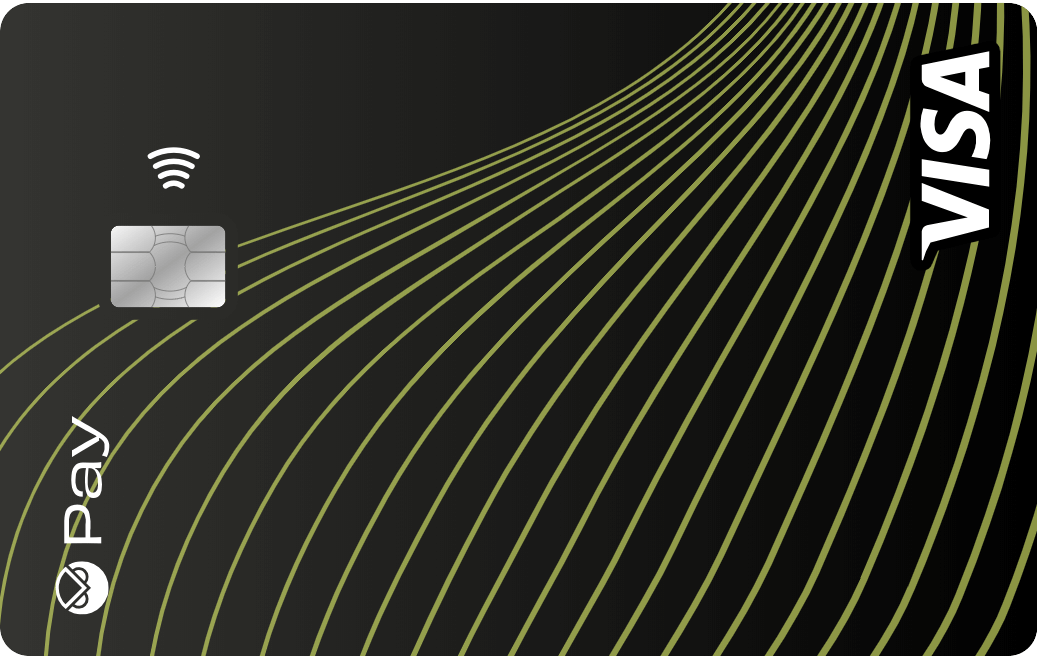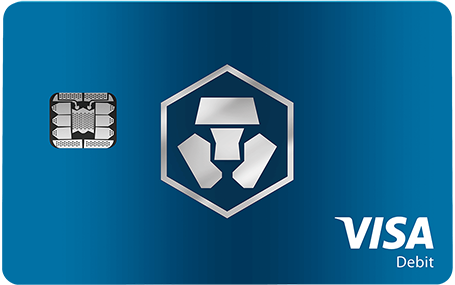Crypto Credit Cards
Key facts about crypto credit cards
- Most of the available bitcoin credit cards are debit cards. All expenses go directly from an account or crypto wallet.
- With free cards, you only pay the fee for exchanging cryptocurrencies. Some of the cards offer attractive cashback programs and additional services. However, you often have to buy their own token for this.
- Our current recommendations ist the Gnosis Card
- Top up with Cryptocurrencies directly from your wallet
- Visa Card
- signup costs (30 Euro)


- Token Swaps
- Spotify Premium included
- Metal card
- 400$ CRO-Token Staking necessary
- max 25$ per month Cashback
- Credit Card App & DeFi App
- Cashback in CRO-Token
Recommended Bitcoin credit cards
Cryptocurrencies have not yet made much headway in everyday payment transactions. Some providers have recognized this gap and included special bitcoin credit cards in their portfolios, which can be used to spend cryptocurrencies. But the market is large. How do crypto credit cards work? And which card is the best for users?
Why the combination of cryptocurrencies and credit cards?
In the crypto community, making online payments via wallet is a given. They use it to transact to and from exchanges or simply transfers to friends. However, Bitcoin & Co. have not yet spread in everyday payment transactions. Even in online shopping, buyers have to be lucky if cryptocurrencies are available for payment.
For users who hold part of their assets in coins, this creates a dilemma. Without institutions or companies that create a bridge between the coins in the wallet and the accepted payment options of the providers, it does not seem to work (yet).
Bitcoin credit cards are a necessary interface in this respect. They combine the advantages of a credit card, such as worldwide payment at many acceptance points, with access to the coins in their own wallets. There are many providers on the market. For users, this raises the question: Which credit cards are good? Which crypto card is suitable for me? Our test gives answers
Our test
Which card is recommended depends on the respective user behavior. For example, if the card is mainly used to withdraw cash, different fees will apply than if online shopping takes the lion’s share. Nevertheless, general recommendations can be made based on carefully defined criteria.
The card providers make profit with the fees incurred, for example, for the conversion of currencies, or the withdrawal at ATMs. A special feature of Bitcoin cards is crypto-to-crypto exchange fees.
The fee structure is relatively similar among all providers. However, exceptions confirm the rule. Some issuers charge a fee for each transaction. With others, transactions are completely free of charge. On the other hand, a hefty fee may be charged for deposits.
The crypto scene has established the term “Bitcoin” credit cards for the cards. It is true that Bitcoin is the most commonly used currency. Nevertheless, many cards explicitly include other cryptocurrencies, especially Ethereum, in their wallet portfolio.
In our test, we scrutinized the credit cards of all well-known providers, in both virtual and physical form. We excluded premium cards.
How do crypto credit cards work?
All tested crypto-credit cards are debit cards, which means transactions are debited directly from a reference account or crypto-wallet. They therefore function like checking cards. This distinguishes them from “classic” credit cards (revolving or charge), where providers pre-finance all payments.
There are also prepaid cards in the crypto sector. Debit and prepaid cards are not considered “real” credit cards in many places and are therefore not accepted. The best-known example is rental car providers. Users should therefore check whether the acceptance point explicitly excludes debit and thus crypto cards.
What criteria should prospective cardholders look for?
Various criteria come into play when making a selection. For some customers, only the fees are decisive. For others, limits or cashback programs will tip the scales.
Fees
Fees take the lion’s share in the evaluation of credit cards. This is because the fee structure and usage behavior determine how much cardholders ultimately have to pay.
When choosing crypto credit cards, there are a number of fees to consider.
Issuance fee
The fees for applying for a new card are up to 10 dollar. The cost of issuing a replacement card is similarly high or low.
However, most providers issue cards completely free of charge for the new owners. Since it is also a one-time payment, this fee is not very significant.
Annual fee
Of course, this is different with an annual fee that is due on a regular basis. The good news is that here, too, only a few providers charge a basic fee.
Caution is advised in the premium segment. As benefits increase, so does the likelihood of an annual fee.
Fees for transacting
This is where card buyers should carefully study the terms and conditions. For those who use the card only occasionally or for specific transactions, the fee carries little weight.
However, with many transactions, and especially with many high transactions, a percentage fee can quickly add up.
Transaction fees are often coupled with limits. It pays to know about the best combinations and choose the card accordingly.
Exchange fees
The profit margin for providers primarily comes from the collection of exchange fees. The approach, well known from the exchanges, defines that users have to pay specific purchase and exchange fees per currency.
For example, when exchanging bitcoin to fiat, there is a certain percentage that is automatically deducted from the final sum in fiat.
Withdraw and Top-up fees
The purpose of a credit card is to enable cashless payments. If cardholders do need cash, they can withdraw it from an ATM.
This results in fees for about half of the credit cards tested, which are either a flat fee or a percentage fee, or a combination of both.
Conversely, issuers face the challenge of keeping large sums of money into users’ wallets and accounts. To keep this manageable, some issuers charge top-up fees.
As with transaction fees, limits must be considered for withdrawals and top-ups.
Limits
A limit on the card means nothing other than that cardholders have a maximum limit on incoming or outgoing funds. If this limit is exceeded, either the respective action is not possible or (further) fees are incurred.
For example, if you can spread out top-ups over weeks and months, you’ll stay under the limits with most cards. With other cards, however, this can lead to hefty fees and bundling the deposit makes more sense.
Usually there are limits for:
- Transactions such as online payments, bank transfers and on-site payments
- Top-ups
- ATM Withdrawals
Limits are set either per day, per week, per month or per year. Often there is also a combination of these periods.
In a few cases, issuers distinguish limits by physical and virtual card.
Tokens & Staking
Issuers want to retain customers as closely as possible. There are several mechanisms for this with crypto credit cards. This can manifest itself, for example, in the fact that cashback is paid out exclusively in the in-house token (see below).
However, the most common is that providers make the possession of their own tokens and their staking a condition for the possession of the credit card. It is not uncommon for the first “tier” of the credit card to be available without such a requirement for prospective customers. As the level rises towards the premium segment, i.e. silver or gold cards, the minimum amount of the token charged increases.
Depending on the utility of the token within the ecosystem, the acceptance beyond, the benefits for stakers and the respective price fluctuations of the token, this has a corresponding effect. For hardcore fans, the step from general activity on the platform to definitive use of the credit card is an easy one.
However, if you are not yet a part of it, you should think twice before committing yourself, especially if the sums involved are large. This makes the exit more inflexible.
In our test, staking has a subordinate role, since no staking is necessary for all free cards.
Top-up and payment methods
Crypto-credit cards have two different top-up and payment mechanisms. In one, users create reserve funds that are drawn from when payments are made. In the other, holders load the cards immediately.
Crypto-to-Fiat payment
The credit card has its own wallets, often several side by side (Bitcoin, Ethereum, Litecoin, etc.). Users can decide that payments in fiat currencies (euros, dollars, etc.) are immediately converted at the current rate. Alternatively, they can determine the exchange time themselves and thus choose a favorable rate. Payments in coins are also possible.
Many providers create the possibility for users themselves to determine in which order the wallets are “debited”. For example, if the Bitcoin wallet is empty, the Ethereum wallet takes its turn, and so on.
Converting cryptos to fiat upon payment is by far the more common option offered.
Crypto to Fiat on recharge
The holder tops up the card via cryptocurrencies. Again, there are often several cryptocurrencies to choose from. They are converted to fiat currency immediately upon loading and as such are credited to the card’s balance in fiat.
Some providers allow direct token swaps via DEX. Also important as a criterion is whether Google, Apple, and/or Samsung Pay are supported.
Supported cryptocurrencies
Whether you’re a large provider or a start-up, Bitcoin and Ethereum are standard for all credit cards, often flanked by the in-house token.
In addition, there are often a handful of other cryptocurrencies per card, usually from the top 10 or top 20 currencies by market capitalization. Litecoin and Ripple are common. Five or more currencies are a rarity.
Support for all Ethereum tokens is also rare, but occurs with Eidoo’s card, for example. The Binance Cards support all of their assets
Cashback programs
Cashback, or discounts on payments, are a popular feature of credit cards. Some crypto credit cards also offer cashback programs. In most cases, however, cashback does not come without something in return. It is also important to check whether cashback applies only to online or also to in-store.
Many providers have a token (BNB or CRO among others). Only those who own a certain amount of them are granted percentages. The payout is often also in their own token.
However, since these tokens are subject to price fluctuations, the cashback percentages may be a milquetoast calculation. For example, there is 1% cashback, but at the same time the price drops by 10%.
Credit card app
Few providers have an app just for credit cards in their portfolio. It is much more common for there to be an app for the entire ecosystem. The card then has its own section in the app.
However, the existence of a dedicated app is not yet self-evident. It is not surprising that especially the big crypto companies can handle credit card management in their own apps.
Credit card providers
The crypto credit card market is large, so it’s no surprise that established platforms are in it as much as disruptive startups.
Issuers like Binance or Crypto.com are familiar to users from numerous other offerings. Eidoo, Monolith and Plutus are rather unknown. Here, the choice depends on personal preference: How important is many years of experience in storing coins for one’s own sense of security?
Location of business and type of company can also play a role, for example, when it comes to regulatory issues.
Additional offers
In addition to the “hard” criteria that play a role in the selection of crypto credit cards, issuers have a number of other benefits on offer. These can be rewards or discounts, or additional benefits on their own platform.
One of the most attractive additional offers at the moment are discounts and free subscriptions to partner companies. A Netflix subscription on top? How about percentages off the monthly Spotify fee? Swipe scores particularly well here.



